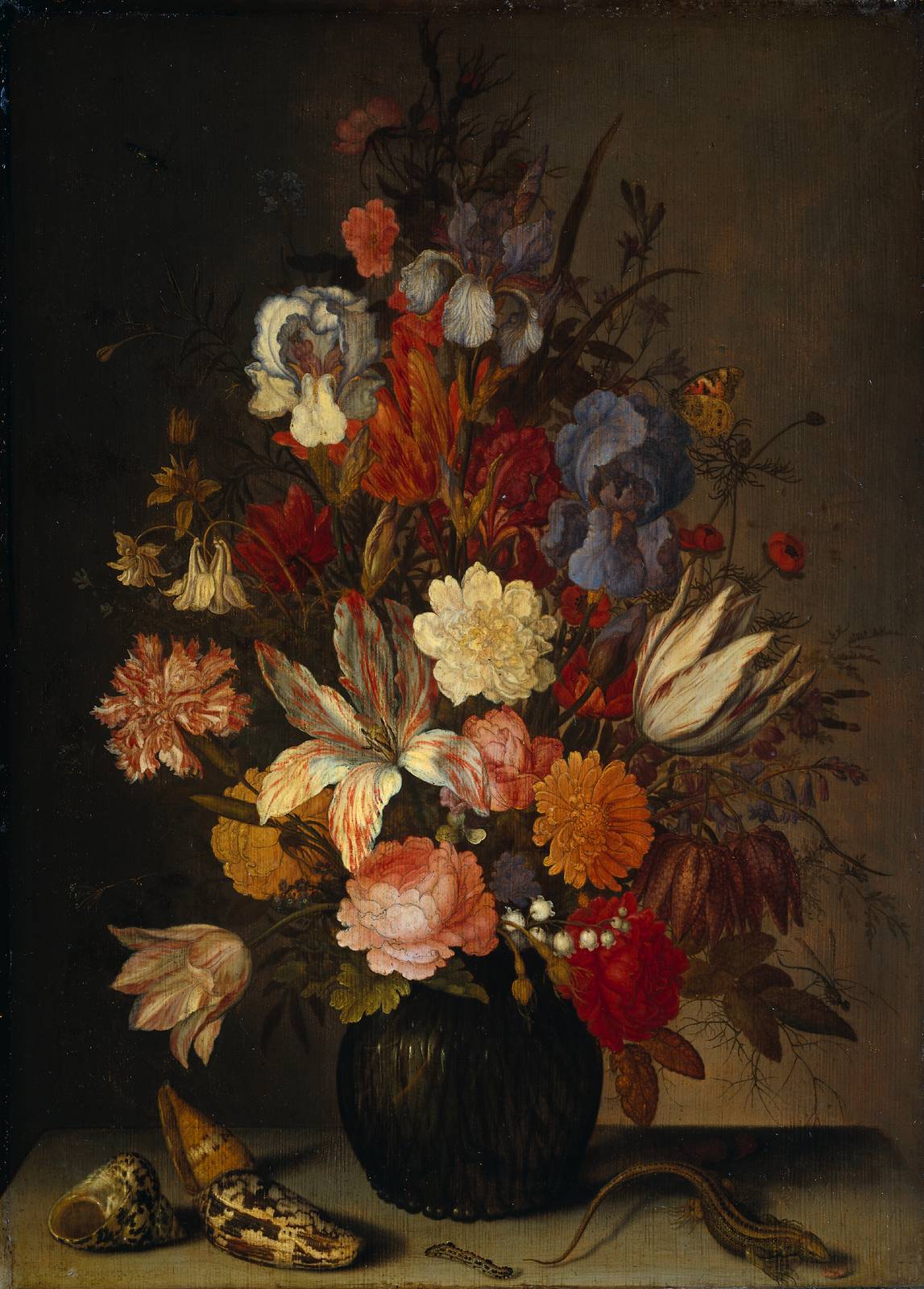
Хейсюм (Huysum) Ян ван 1682-1749
 Галерея (ссылка)
Галерея (ссылка)О символике цветов в классическом искусстве (ссылка)
Хейсюм (Huysum) Ян ван (1682-1749) - амстердамский живописец конца XVII в. Специализировался в изображении цветов.
Для рисования цветов с натуры Ян ван Хейсум вынужден был каждое лето проводить в Харлеме, который тогда, как и теперь, был центром голландского цветоводства. Художнику также приходилось ждать смены сезонов, чтобы написать желаемый цветок. В одном из писем он объяснял заказчику, что не сможет закончить натюрморт, включающий желтую розу, пока она не зацветет следующей весной. Благодаря этому сами натюрморты становились своеобразной цветочной коллекцией.


Rachel Ruysch (June 3, 1664 — August 12, 1750)
 Еще её работы (ссылка)
Еще её работы (ссылка)Биография (ссылка)
в Голландии ее называли самой прославленной женщиной-художником пишущей натюрморты с цветами конца17 и 18 веков.
Spaendonck Cornelius van (1756-1840)
 Cornelis van Spaendonck was born in the Dutch city of Tilburg, but by the age of seventeen, after completing an apprenticeship in Antwerp, he followed his older brother Gerard, also a gifted still life artist, to Paris. Like his older brother, who went on to become professor of flower painting at the Jardin des Plantes in Paris and a major contributor to the royal collection of botanical watercolors, Cornelis van Spaendonck went on to a long and celebrated career in France. In 1779 he was already exhibiting successfully and ten years later he was accepted as a member of the Académie des Beaux Arts. During that same period he served as a designer and as director of the prestigious Sèvres porcelain works. Van Spaendonck's status and prosperity were undisturbed by the political upheavals which took place during his long life, and he remained an acclaimed flower painter well into the nineteenth century. Cornelis and his brother Gerard retained quite distinctive styles throughout their careers. Cornelis used a softer touch in his works, which tend to be more romantic and fanciful than those of his more literal-minded brother. This atmospheric still life, with its lush cornucopia of flowers spilling over the canvas, demonstrates those qualities, as well as the technical virtuosity and finish for which Cornelis became famous. The flowers include tulips, roses, morning glories and many others, overflowing a vase that rests on a marble plinth, next to a bird's nest. In a subtle but characteristically brilliant touch, the artist shows the flowers reflected in the smooth convex surface of the vase. In the background, an aloe plant, veiled by shadow, rests upon a tall pedestal at left, while at right the setting opens up to an evocative view of the sky. This is a masterwork by this noted artist.
Cornelis van Spaendonck was born in the Dutch city of Tilburg, but by the age of seventeen, after completing an apprenticeship in Antwerp, he followed his older brother Gerard, also a gifted still life artist, to Paris. Like his older brother, who went on to become professor of flower painting at the Jardin des Plantes in Paris and a major contributor to the royal collection of botanical watercolors, Cornelis van Spaendonck went on to a long and celebrated career in France. In 1779 he was already exhibiting successfully and ten years later he was accepted as a member of the Académie des Beaux Arts. During that same period he served as a designer and as director of the prestigious Sèvres porcelain works. Van Spaendonck's status and prosperity were undisturbed by the political upheavals which took place during his long life, and he remained an acclaimed flower painter well into the nineteenth century. Cornelis and his brother Gerard retained quite distinctive styles throughout their careers. Cornelis used a softer touch in his works, which tend to be more romantic and fanciful than those of his more literal-minded brother. This atmospheric still life, with its lush cornucopia of flowers spilling over the canvas, demonstrates those qualities, as well as the technical virtuosity and finish for which Cornelis became famous. The flowers include tulips, roses, morning glories and many others, overflowing a vase that rests on a marble plinth, next to a bird's nest. In a subtle but characteristically brilliant touch, the artist shows the flowers reflected in the smooth convex surface of the vase. In the background, an aloe plant, veiled by shadow, rests upon a tall pedestal at left, while at right the setting opens up to an evocative view of the sky. This is a masterwork by this noted artist.
Подписаться на:
Комментарии (Atom)








